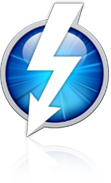We’ve heard about how 3D printers can be used to manufacture toys, small machine parts, and even some prosthetic devices for human bodies. But as applications emerge, so do some difficult questions.
- According to this Wired story, a printed car might soon share the road with you. But for legal reasons, it might technically be a motorcycle.
- This NPR story explores some of the intellectual property questions raised by 3-D printers.
- It’s one thing to print a figurine of a copyrighted comic book character; printing a lethal weapon is something else altogether.
This NPR story explains how 3-D printers muddy the waters in the debate over gun safety.
